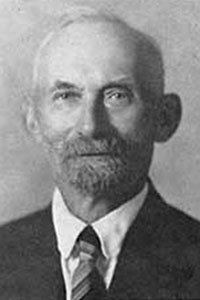
Eminent Farmer
County: Day
William M. Naessig, Webster, was born in Saxony, Germany, July 6, 1861. He attended school in Germany until he was 17. After completing a period of service in the German army he worked at the carpenter trade in his native land until he had saved about $150. At 21, he set out alone for America. The young man went to work as a carpenter, following his trade in and around Minneapolis for three years. He purchased a land relinquishment in South Dakota, his present home quarter, near Webster. This was in 1884, and he lived there until his death in 1949.
Naessig was married in 1884, and the Naessigs had six children. Mrs. Naessig died in 1906.
During the 10 years between 1904 and 1914, Naessig submitted to five surgical operations. At the same time he had to provide a living and care for a motherless family.
There were 606 acres in the home farm and an additional 245 acres leased, so the Naessig farm operations covered 850 acres. He owned two other farms in the county.
Naessig combined grain farming with livestock growing and feeding. He built a reputation as a flax grower, planting this crop each year since 1889 except in 1918.
He was a charter member of the County Crop Improvement association. For years, he was a source of certified seed for the county.
Naessig was one of the pioneer members of the county weed control committee. He was the first to discover leafy spurge in the county and lost no time in identifying it and getting it under control.
Naessig’s farm program always included good livestock. There was a herd of about 50 milking Shorthorns on the farm.
Each year he fed about 25 steers for the market. In years of abundant feed, he stored the surplus.
In 1896 he helped to organize the Webster cooperative creamery. Two Webster institutions probably owe their existence to William Naessig. These are the farmer’s cooperative elevator and a local bank. About 1920 the grain elevator became seriously involved. The directors, among them Naessig, financed its reorganization. Naessig was elected president of the bank that failed, when it was reorganized. He held the office of president seven years and continued for many more as a director.

